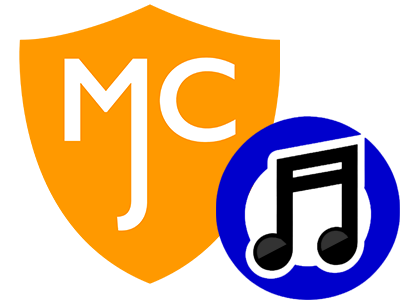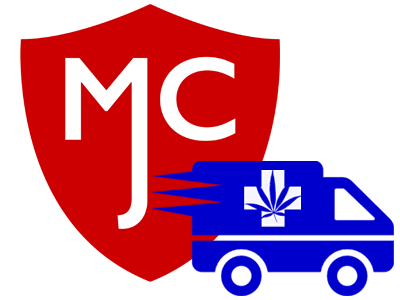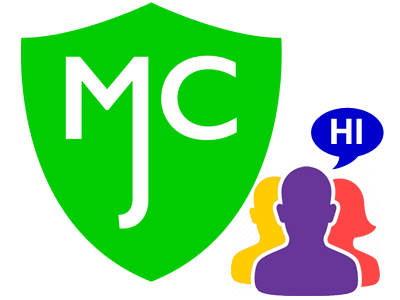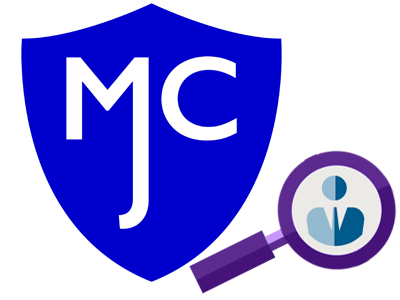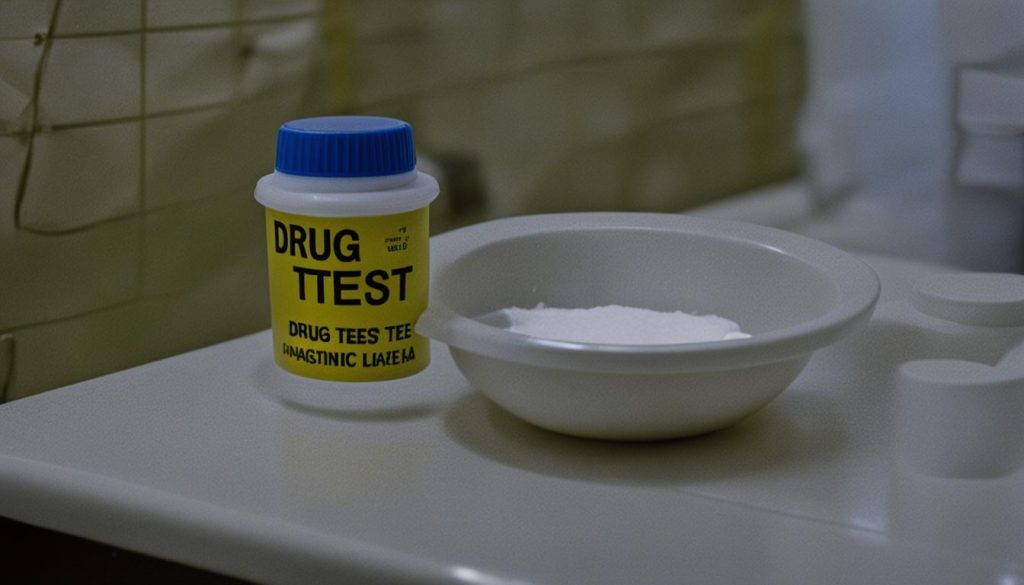
We understand the importance of finding legal methods to pass a probation drug test. As a condition of probation, drug testing is commonly used to ensure compliance and a drug-free lifestyle. We believe in providing individuals on probation with the knowledge and tools they need to successfully navigate drug testing and maintain their clean status.
Drug testing can be a challenging process, and it is crucial to understand the different methods used and how they work. By familiarizing yourself with these methods, you can better prepare for a probation drug test and increase your chances of passing.
Key Takeaways:
- Probation drug testing is commonly used as a condition of probation.
- Understanding the different drug testing methods can help you prepare effectively.
- Urine testing is the most commonly used method for drug screening.
- Other methods include sweat patch testing for continuous detection and breath testing for alcohol.
- It is important to prioritize addiction recovery and adhere to the rules of probation to avoid legal consequences.
Methods of Drug Testing
There are various methods used for drug testing, each with its own strengths and limitations. Understanding these methods can help individuals navigate the process and be prepared for the type of testing they may encounter. The two main types of drug testing are screening tests and confirmation tests.
Screening Tests
Screening tests are the initial step in drug testing and are commonly used to detect the presence of drugs in a person’s system. The most commonly used screening test is urine testing, which involves the analysis of a urine sample for drug metabolites. Urine testing can be further divided into two types: immunoassay and gas chromatography/mass spectrometry (GC/MS).
Immunoassay tests are designed to quickly identify the presence or absence of specific drugs or drug classes in urine samples. These tests are cost-effective and have a rapid turnaround time, making them suitable for initial screening. However, immunoassay tests can sometimes produce false-positive results, leading to the need for confirmation tests.
Confirmation Tests
Confirmation tests are conducted to confirm the results of a positive screening test. The most commonly used confirmation test is gas chromatography/mass spectrometry (GC/MS). This method provides a more accurate and precise analysis of the drug metabolites present in a urine sample.
Confirmation tests are crucial in distinguishing between false-positive and true-positive results. They can identify specific drugs and their metabolites, determine the concentration of drugs in the system, and provide a more comprehensive picture of drug use. However, confirmation tests are more expensive and time-consuming compared to screening tests.
Other drug testing methods include blood, sweat, breath, and saliva tests. Blood tests are often used in forensic settings or when immediate drug detection is necessary. Sweat patch tests are used for continuous drug detection over an extended period. Breath tests are commonly used for alcohol detection, while saliva tests are employed in situations where immediate drug use needs to be detected.
Table 2: Comparison of Drug Testing Methods
| Testing Method | Pros | Cons |
|---|---|---|
| Urine Testing | Widely available, non-invasive, provides historical drug use information | Possible sample tampering, limited detection window, false-positive results |
| Blood Testing | Accurate, immediate drug detection | Invasive, expensive, limited detection window |
| Sweat Patch Testing | Continuous drug detection, less invasive than urine testing | Less commonly used, may not be as sensitive as other methods |
| Breath Testing | Non-invasive, quick results, commonly used for alcohol detection | Does not detect drug use, only detects recent alcohol consumption |
| Saliva Testing | Non-invasive, easy sample collection, detects recent drug use | Short detection window, limited to detecting recent drug use |
Urine Testing
In drug testing, urine testing is one of the most commonly used methods. It involves analyzing urine samples for the presence of drug metabolites. Immunoassay tests are typically used as a screening method, while gas chromatography/mass spectrometry (GC/MS) is used to confirm positive screens. However, individuals on probation often try to find ways to pass a drug test by diluting their urine or using other methods.
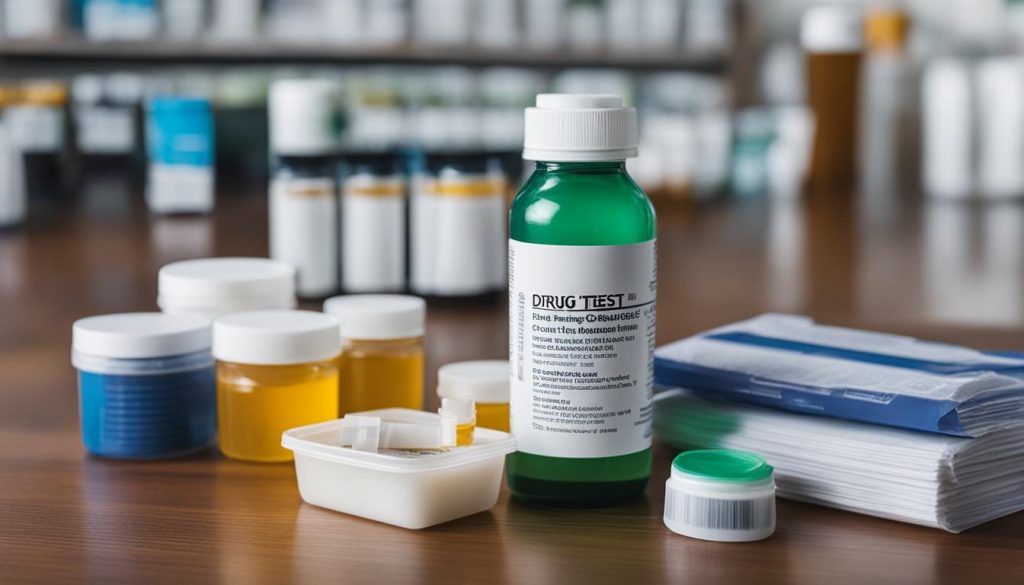
The dilution method is a popular technique used to pass a drug test. It involves drinking large amounts of water or other fluids to dilute the urine and flush out toxins. However, laboratories can easily detect diluted samples by measuring the urine creatinine levels. Creatinine is a waste product produced by the muscles, and normal levels indicate that the urine is not excessively diluted.
To successfully pass a probation drug test and achieve clean urine, it is important to maintain normal creatinine levels. This can be done by avoiding excessive fluid intake before the test and ensuring proper hydration without overhydration. Additionally, adopting a healthy lifestyle that includes regular exercise and a balanced diet can help naturally flush out toxins from the body and maintain optimal creatinine levels.
Table: Urine Creatinine Levels
| Normal Creatinine Levels | Diluted Urine | Impact on Test Results |
|---|---|---|
| 20-370 mg/dL | Low creatinine levels due to excessive fluid intake | Laboratories can detect diluted samples and may require retesting |
| 20-370 mg/dL | Normal creatinine levels within the range | The urine test results are more likely to be accurate |
“Maintaining normal creatinine levels is essential for passing a probation drug test. Diluting urine by excessive fluid intake can lead to low creatinine levels, which laboratories can easily detect. It is crucial to strike a balance between hydration and avoiding overhydration to ensure accurate test results.”
By understanding the importance of urine creatinine levels and adopting healthy habits to maintain them, individuals on probation can increase their chances of passing a drug test. It is crucial to prioritize clean urine and comply with the conditions of probation to avoid further legal consequences.
Sweat Patch Testing
Sweat patch testing is a method used for continuous detection of drugs in perspiration. Unlike urine testing, which provides a one-time snapshot of drug usage, sweat patch testing offers ongoing monitoring to assess substance use over an extended period of time.
The sweat patch, a small adhesive patch worn on the skin, collects perspiration containing drug metabolites. The patch is designed to be tamper-resistant, making it difficult for individuals to manipulate or remove it without detection. This makes it a valuable tool for substance use testing in probation and parole settings, where continuous monitoring is essential.
“Sweat patch testing provides a comprehensive and reliable method for monitoring substance use during probation or parole. It offers continuous detection, allowing for a more accurate assessment of an individual’s drug usage over time.”
Although sweat patch testing is less commonly used than urine testing, it has several advantages. It provides continuous detection and eliminates the need for frequent visits to a testing facility. Additionally, sweat patch testing is non-invasive and does not require observed sample collection, maintaining privacy and dignity for individuals undergoing testing.
Comparison of Sweat Patch Testing vs. Urine Testing
| Aspect | Sweat Patch Testing | Urine Testing |
|---|---|---|
| Detection Time | Continuous detection for up to 7-10 days | Short-term detection (typically 1-3 days) |
| Tamper-Resistance | Difficult to tamper with or remove without detection | Possible to dilute or substitute urine samples |
| Privacy | Non-invasive and does not require observed sample collection | Requires observed sample collection, potentially compromising privacy |
| Usage Assessment | Provides a comprehensive and accurate assessment of substance use over time | Offers a one-time snapshot of recent drug usage |
Alcohol Testing Methods and Monitoring Devices
When it comes to testing for alcohol use, there are two commonly used methods: breath testing and urine testing. These methods are employed in various settings, including law enforcement, probation, and treatment programs. Let’s take a closer look at each method and explore the alcohol monitoring devices available.
Breath Testing
Breath testing, also known as breathalyzer testing, is a non-invasive method of detecting alcohol in a person’s system. It works by measuring the concentration of alcohol in the breath, which is directly related to the alcohol concentration in the blood. Breath testing devices are often used by law enforcement officers during traffic stops to determine if a driver is under the influence of alcohol.
These devices are portable and easy to use. The individual blows into a mouthpiece connected to the device, and the device provides a reading indicating the blood alcohol content (BAC) level. Breath testing is quick and provides immediate results, making it a convenient method for on-the-spot alcohol detection.
Urine Testing
Urine testing can also be used to detect alcohol in the body. However, it is important to note that urine testing is less accurate than breath testing when it comes to determining recent alcohol use. This is because alcohol is rapidly metabolized and eliminated from the body. While urine testing can detect alcohol use within a certain timeframe, its accuracy diminishes as time passes.
Despite its limitations, urine testing may still be used in certain situations, such as probation or treatment programs where continuous monitoring is required. It can provide valuable insights into a person’s alcohol consumption patterns over a longer period of time.
“Breath testing is a non-invasive and immediate method of detecting alcohol in a person’s system, making it a convenient choice for on-the-spot alcohol detection.”
Alcohol Monitoring Devices
In addition to breath and urine testing, there are alcohol monitoring devices available that provide continuous monitoring for individuals with abstinence conditions. These devices are designed to track an individual’s alcohol consumption over time and can be used in various settings, including probation and treatment programs.
Remote alcohol testing devices use advanced technology to remotely monitor an individual’s blood alcohol content. These devices can provide real-time updates and alerts if alcohol use is detected. Transdermal alcohol monitoring devices, on the other hand, measure alcohol levels through the skin. They are often worn as bracelets or anklets and can provide continuous monitoring of alcohol consumption.
These alcohol monitoring devices offer a more comprehensive approach to alcohol testing and can help individuals maintain sobriety while under monitoring conditions.

| Methods | Advantages | Limitations |
|---|---|---|
| Breath Testing | – Non-invasive and quick results – Widely accepted and used | – Limited to detecting recent alcohol use – Accuracy can be affected by external factors such as mouthwash or breath fresheners |
| Urine Testing | – Can provide insights into alcohol consumption patterns over time – Suitable for continuous monitoring | – Less accurate for detecting recent alcohol use – Alcohol metabolizes and is eliminated quickly from the body |
| Alcohol Monitoring Devices | – Continuous monitoring for individuals with abstinence conditions – Real-time updates and alerts – Comprehensive approach to alcohol testing | – Initial cost and maintenance of devices – Requires compliance and cooperation from the individual being monitored |
Available Treatment Services
In our journey toward recovery from substance use disorder, it is essential to have access to effective treatment services. We understand the complexities and challenges of addiction, and our goal is to provide comprehensive care that addresses the unique needs of each individual.
Our treatment services encompass a range of evidence-based approaches, ensuring that our clients receive the most up-to-date and effective care available. Our team of experienced professionals is dedicated to supporting individuals on their path to recovery and providing them with the tools they need to achieve lasting sobriety.
Medication-Assisted Treatment (MAT)
One of the key treatment services we offer is Medication-Assisted Treatment (MAT). MAT combines medications with counseling and behavioral therapies to address substance use disorders. This approach has been proven to be highly effective in managing cravings, reducing withdrawal symptoms, and preventing relapse.
We provide a comprehensive MAT program that includes personalized medication plans, regular monitoring, and ongoing support from our medical and counseling staff. Our focus is on empowering individuals to regain control over their lives and overcome the challenges of addiction.
| Treatment Services Offered: | Benefits: |
|---|---|
| Case management | Individualized support and coordination of care |
| Intake assessment and report | Thorough evaluation to tailor treatment plans |
| Cognitive behavioral group counseling | Skills development and peer support |
| Substance use counseling | Individual and group therapy |
| Integrated treatment for co-occurring disorders | Addressing the underlying causes of addiction |
| Residential substance use treatment | Structured environment for intensive recovery |
| Medication-assisted treatment (MAT) | Effective management of cravings and withdrawal |
At our treatment center, we recognize that every journey to recovery is unique. Our team is committed to providing compassionate and individualized care to each person who walks through our doors. Together, we can overcome addiction and build a healthier, more fulfilling future.

How Long Do Drugs Stay in the Body?
When it comes to drug testing, one of the most important factors to consider is the detection time of drugs in the body. This varies depending on the substance and the type of drug test being used.
“The detection time of drugs in the body varies depending on the substance and the type of drug test.”
For urine tests, drugs can typically be detected for one to six days. Blood tests, on the other hand, are unlikely to detect drugs within a day or two of use.
However, hair follicle tests have a much longer detection window and can detect drugs up to three months after use. This is due to the fact that drug metabolites become trapped in hair as it grows.
Table: Drug Detection Times
| Drug | Urine Detection Time | Blood Detection Time | Hair Follicle Detection Time |
|---|---|---|---|
| Marijuana | 1-30 days | 1-2 days | Up to 90 days |
| Cocaine | 2-3 days | 1-2 days | Up to 90 days |
| Opiates | 1-3 days | 1-2 days | Up to 90 days |
| Amphetamines | 1-3 days | 1-2 days | Up to 90 days |
It is important to keep these detection times in mind when preparing for a drug test. If you have recently used drugs, it is likely that they will still be detectable, especially in hair follicle tests. It is crucial to be aware of the potential consequences and seek help if you are struggling with drug use.
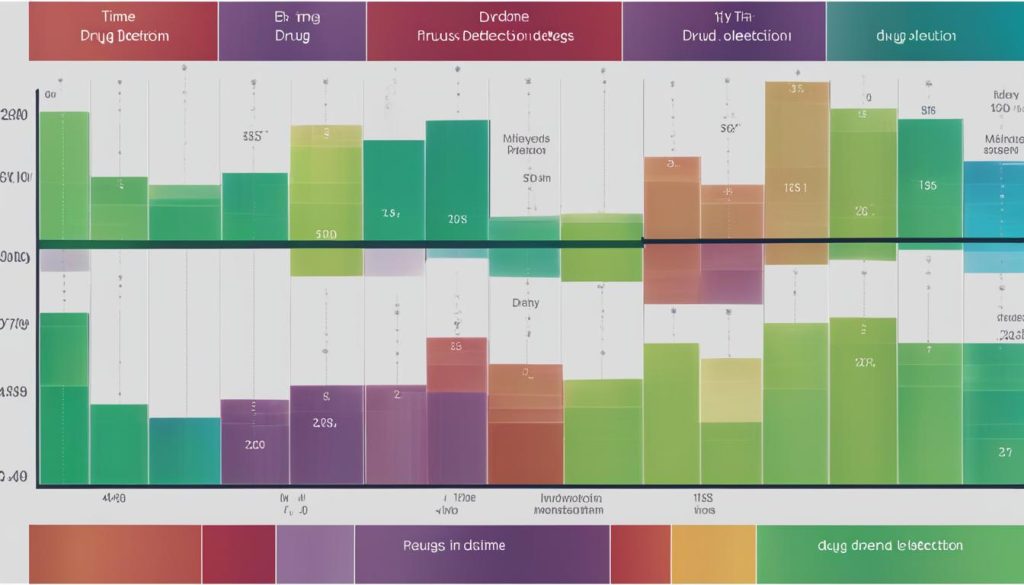
In the next section, we will explore different methods to cleanse the body of substances in an attempt to pass a drug test.
How to Cleanse the Body of Substances
When faced with a probation drug test, individuals often seek ways to cleanse their bodies of substances. However, it is important to note that attempting to pass a drug test while still using drugs can have severe consequences. Labs can detect diluted samples and synthetic urine, rendering those methods ineffective. It is crucial to prioritize recovery and adhere to the rules and conditions of probation to avoid further legal troubles.
There are various detoxification methods that people try in an effort to pass a drug test. One common approach is the dilution method, which involves drinking excessive amounts of water to dilute the urine. While this method may temporarily mask the presence of drugs, it is not foolproof. Labs can detect diluted samples by measuring urine creatinine levels, which can lead to a failed drug test.
Another method some individuals attempt is using synthetic urine or someone else’s clean urine. However, labs have become more sophisticated in detecting synthetic urine, and using someone else’s urine is risky and can lead to legal consequences if caught. It is important to understand that detoxification methods have their limitations and may not guarantee success in passing a drug test.
| Detoxification Methods | Effectiveness |
|---|---|
| Drinking excessive amounts of water | Temporary dilution; can be detected |
| Using synthetic urine | Increasingly detected by labs |
| Using someone else’s clean urine | Risky and can lead to legal consequences |
Attempting to pass a drug test through detoxification methods may seem tempting, but it is important to remember that honesty and abstinence are the best approaches to successfully navigate probation and maintain a clean record.
Conclusion
When it comes to probation drug tests, finding legal methods to pass while staying clean is paramount. While the effectiveness of drug testing as a probation condition is debated, it is crucial for individuals on probation to prioritize their recovery and adhere to the rules and conditions.
Addiction recovery is a challenging journey, but with the right treatment services, such as medication-assisted treatment (MAT), individuals can find support in their efforts to maintain sobriety. MAT combines medications with counseling to treat specific substance use disorders and provide a comprehensive approach to recovery.
We understand that the path to addiction recovery can be difficult, but it is important to stay committed and seek the help needed to overcome challenges. By prioritizing recovery and adhering to probation requirements, individuals can avoid further legal consequences and work towards a healthier, drug-free future.
FAQ
Can drinking excessive amounts of water help me pass a drug test?
Diluting urine by drinking excessive amounts of water is a common method to pass a drug test. However, laboratories can easily detect diluted samples by measuring urine creatinine levels. It is important to maintain normal creatinine levels and flush out toxins from the body to successfully pass a drug test.
Can I use synthetic urine to pass a drug test?
Using synthetic urine is a method that some individuals try to pass a drug test. However, laboratories can detect synthetic urine, and using it can have severe consequences. It is important to find legal methods and prioritize recovery instead of attempting to cheat the drug test.
Can I use someone else’s clean urine to pass a drug test?
Attempting to use someone else’s clean urine to pass a drug test is not advisable. Laboratories can detect samples that do not match your own physiological characteristics. It is important to find legal methods and prioritize recovery to avoid further legal consequences.
How effective is probation in preventing drug use?
The effectiveness of probation in preventing drug use is debated. However, for individuals on probation, it is important to find legal methods to pass a drug test and stay clean. Treatment services, such as medication-assisted treatment, can aid in addiction recovery and help individuals maintain sobriety during probation.
How long do drugs stay in the body?
The detection time of drugs in the body varies depending on the substance and the type of drug test. Drugs can be detected in urine for one to six days, while blood tests are unlikely to detect drugs within a day or two of use. Hair follicle tests can detect drugs up to three months after use. It is important to be aware of the detection times when preparing for a drug test.
How can I cleanse my body of substances before a drug test?
People often try various methods to cleanse their bodies of substances before a drug test. Some common methods include diluting urine by drinking excessive amounts of water, using synthetic urine, or attempting to use someone else’s clean urine. However, these methods are not foolproof, as laboratories can detect diluted samples and synthetic urine. It is important to note that attempting to pass a drug test while still using drugs is risky and can have severe consequences.
What treatment services are available for individuals struggling with addiction?
Various treatment services are available for individuals struggling with addiction and substance use disorder. These services include case management, intake assessment and report, cognitive behavioral group counseling, substance use counseling, integrated treatment for co-occurring disorders, residential substance use treatment, and medication-assisted treatment (MAT). MAT involves the use of medications in combination with counseling to treat specific substance use disorders.
What are the methods of drug testing?
Drug tests can be performed using various biological specimens such as urine, blood, sweat, breath, and saliva. The most commonly used method is urine testing, which involves two types: immunoassay and gas chromatography/mass spectrometry (GC/MS). Immunoassay tests are often used as a first-level screening, while GC/MS is utilized to confirm positive screens. Other methods include sweat patch testing for continuous detection of drugs in perspiration and breath testing for detecting alcohol in the body.
How is alcohol testing done?
Alcohol testing can be done through breath testing or urine testing. Breath testing is administered by an officer or a treatment program to detect alcohol in a person’s body. Urine testing can also be used to detect alcohol, but its accuracy is limited as alcohol leaves the body quickly. Alcohol monitoring devices, such as remote alcohol testing devices and transdermal alcohol monitoring devices, provide continuous monitoring for individuals with abstinence conditions.









